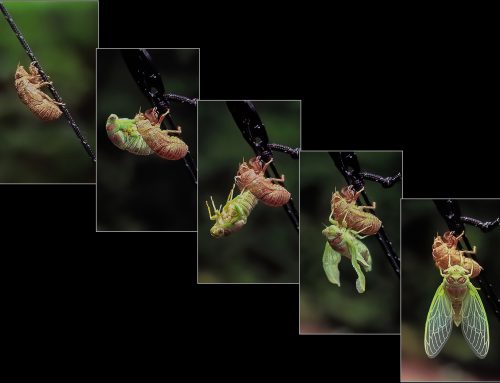On Wednesday (4 December 2019) club members enjoyed a fascinating slideshow of infrared images – with a bit of some other genres thrown in for good measure. Colin Southgate LRPS DPAGB came to introduce us to “The Wonderful World of Infrared” and tell us how he goes about taking infrared pictures.
More of Colin’s work, together with an article “Walking in an I/R Wonderland”, can be found at https://csouthgate.wixsite.com/colinsouthagte
Normal photography involves the capture of visible light. Infrared photography, on the other hand, involves the capture of light that lies beyond the visible spectrum.
As the light is invisible to the human eye, but can still of course be “seen” by the sensor of a digital camera, the images created by it are markedly different to “normal” images. They can be wild and eerie and are never less than intriguing as they can change something mundane into something dramatic. Infrared photography therefore offers fresh creative opportunities and opens a whole new dimension to explore.
As Colin said, not everyone likes it. And those who do often get addicted!
Infrared photography has been around for years. But it is still a new and unusual subject for most photographers. But modern digital cameras make the use of this technique cheaper and more straightforward.
Broadly, as Colin explained, there are three choices.
The first is to create faux infrared images in Photoshop (or similar software).
The second is to use an infrared filter on the front of the lens (so long as the sensor does not have a sensor filter, such as an anti-alias filter, that blocks infrared light). As the filter is opaque the technique involved is essentially long exposure photography using a tripod.
The third choice – and the one now used by Colin after he has used the others – is to have a camera permanently converted to infrared by installing a sensor filter that blocks visible light (and removing any sensor filter that blocks infrared). The camera is then not limited to long exposures and can be used just as for photographing images within the visible light spectrum. It costs around £200 to have an old, or second hand, camera converted. Colin had his old Nikon D70 converted some years ago when he acquired a new D90.
As Colin’s images demonstrated, the way in which infrared light is absorbed or reflected differs from visible light. Water, blue skies and fir trees absorb infrared light and so appear much darker than normal. Deciduous trees and grass, on the other hand, reflect infrared light and so appear much lighter. It is these sorts of differences that create the eye-catching high contrast look that is the hallmark of infrared photography.
Landscapes and all sorts of architecture – old and new buildings, shopping malls and retail parks, glasshouses (a particular passion for Colin), even cruise ships – make good subjects. But everything is fair game. With the advantage that effective images can be taken in almost any lighting conditions. Indeed, more compelling images can often be produced in the middle of the day than in the golden or blue hour.
Colin explained that, once an image has been captured, it can be processed into a straight monochrome picture. But an alternative is to include some (false) colour. This can be done in Photoshop using Curves or other adjustment layers and layer masks with various blending modes (“it’s always fun to experiment”). Another way of playing with colour is “channel swapping”. All sorts of effects can be created in the Channel Mixer by adjusting the red and blue sliders in the red and blue channels. Colin produces both monochrome and “colour” images depending on how either approach suits a particular photograph.
Colin’s presentation included an extensive slideshow of his fascinating images together with the explanations behind them. The many beguiling pictures – coupled with Colin’s entertaining and informative commentary – made this a captivating and stimulating exhibition of the creative potential of infrared photography.

![Brave New World [1400×1050]](https://i0.wp.com/lbpc.org.uk/wp-content/uploads/2020/12/Brave-New-World-1400x1050-1.jpg?resize=1366%2C1025&ssl=1)
![Sky Walk 2 [1600×1200]](https://i0.wp.com/lbpc.org.uk/wp-content/uploads/2020/12/Sky-Walk-2-1600x1200-1.jpg?resize=1366%2C1025&ssl=1)




Leave a Reply